Using the Calendar
- Videos
- Changing the view of the calendar
- Time zone
- Filtering the calendar
- Setting your calendar office hours
- Create an all-day event
Videos
Calendar and Scheduling
This Sessions Health tutorial teaches you how to use the calendar and schedule appointments.
Changing the view of the calendar
The calendar has three views: month, week, and day. Change the view by selecting from the drop-down in the top-right of the screen. When you change the view of the calendar, that view will persist on that device until you change it again.
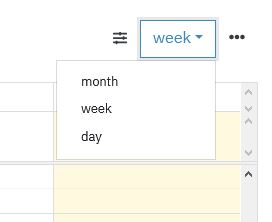
Once you've changed the view, the navigation in the top-left will change as well.
Month navigation

Week navigation

Day navigation

Keyboard navigation
Alt-c - You may navigate to the calendar from any screen by pressing 'Alt-c.'
t - While on the calendar, you can navigate to today by pressing 't.' Navigating to today won't change the type of view you have selected. For example, if you are navigating by month and press 't,' the calendar will return you to the month of the current day.
Time Zone
Please see the Time Zones article for details about using the time zone settings on the calendar.
Filtering the calendar
You can customize your calendar view with filters to make scheduling and tracking more efficient. To apply a filter, click the filter icon in the upper right corner of your Calendar page.
To refine your view, deselect All to expand and adjust the available filter options.

- Filter by Practitioner: If your clinic has multiple practitioners, use this filter to display only the practitioners you’d like to see on the calendar.
- Filter by Incomplete Notes: Toggle the Incomplete Notes button to on (highlights to blue) to quickly identify which appointment notes are still incomplete to help streamline your workflow.
- Filter by Location: If your clinic operates in multiple service locations, you can filter the calendar to display appointments for a specific location.
- Filter by Room: If your group practice uses multiple meeting rooms, you can adjust your calendar view to display only the appointments scheduled in a designated room. When combined with "All" practitioners, this helps you see room availability at specific times.
Select Clear All to reset your calendar back to the default view.
Setting your calendar office hours
In your calendar, you can gray out unavailable office hours. This can be helpful when scheduling an appointment or if you have a scheduler for your practice scheduling appointments.
Note: Your office hours are separate from your online booking availability. Office hours are not visible externally and are only visible to your practice.
To set up office hours, click "..." in the upper right corner of your calendar view and select Office Hours. Next, click the Set Office Hours button and select the days and times of your office hours.
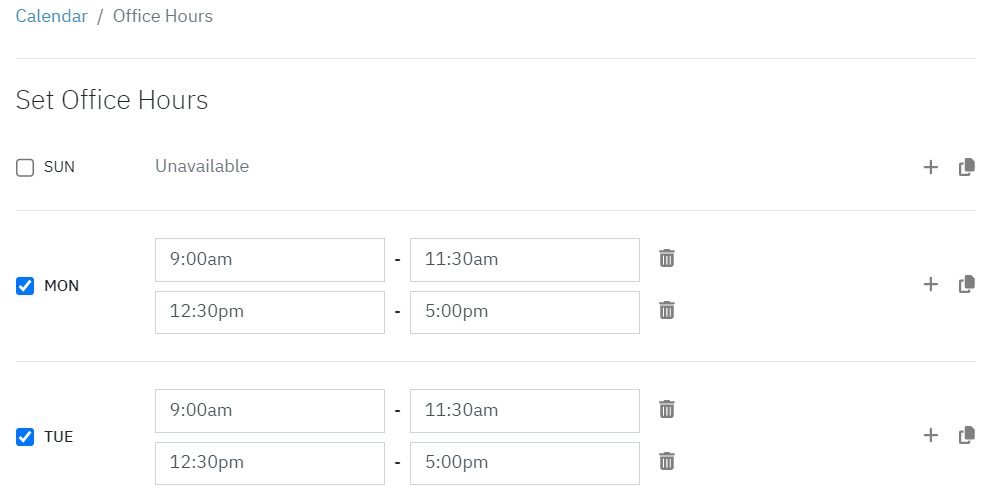
Lastly, choose the time zone that aligns with the office hours you’ve set.

Your office hours will automatically save. You can now check your calendar to ensure the grayed-out sections accurately reflect the hours you’ve set up.

Note: In group practices, each practitioner has the flexibility to set their own office hours. However, when viewing schedules, office hours will appear grayed out only when looking at one practitioner at a time.
Schedulers and Practitioners with an Administrator role can establish both a default office hour schedule for the entire practice and individual schedules for each practitioner.
Create an all-day event
To create an all-day event show at the top of the calendar, click the area at the top of the calendar or click into any timeslot and select Other Event and check the All day box.

Note: Client events cannot be created as all-day events.
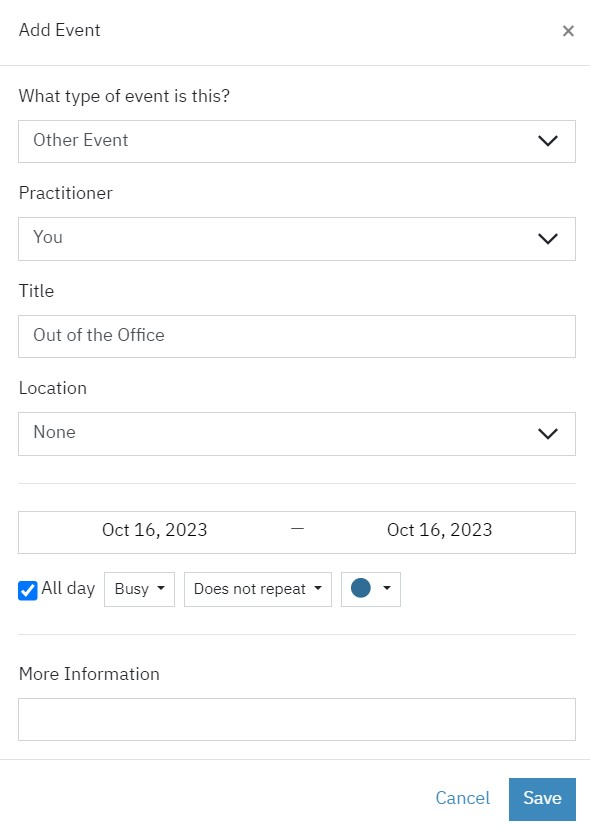
You may also select whether you'd like the all-day event to be shown as Busy or Free on your calendar. If you show it as Busy, any online booking availability will be blocked all day. The all-day event will display at the top of your calendar.
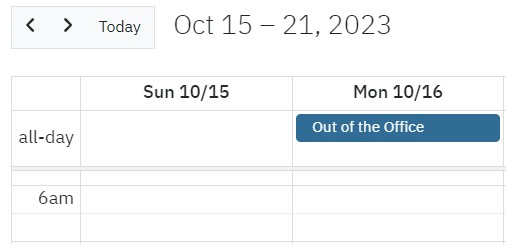
Managing Availability When Out of Office
You may also add days out of the office to your online booking availability. First, click the Manage Availability button from your calendar.
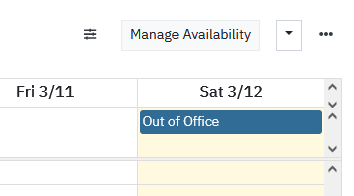
Next, click the + Add button in the Date Overrides area. select any dates you'll be out of the office and remove any hours available at the bottom by clicking the trash bin icons. Lastly, click the Save button.

